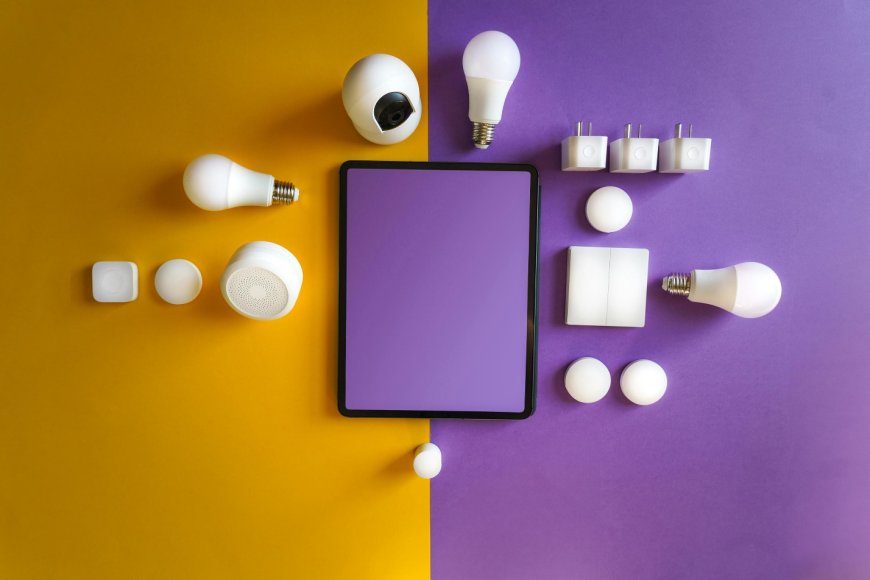Integrating Technology for Better Living in 2025

The modern smart house has progressed well beyond app-operated thermostats and voice-activated lights. Operating silently in the background, today's linked ecosystems mix hardware, software, and artificial intelligence to create living places that anticipate requirements, improve security, and simplify everyday activities. Growing more complex, these systems are changing our interactions with our homes and transforming them into dynamic partners in comfort rather than just static shelters. Industry estimates indicate that over 400 million families globally will engage in this quiet revolution by 2026, using integrated technologies to simplify everything from family safety to energy management.
The Foundation of Interoperability
Every successful smart home system is based on interoperability, the sometimes-disregarded ability of devices from several manufacturers to interact effortlessly. Early adopters were annoyed when Philips Hue lights ignored commands from Amazon's Alexa or when their Google Nest thermostat refused to "speak" to Samsung's SmartThings hub. Different communication systems including Z-Wave, Zigbee, and proprietary cloud-based systems that produced technical silos led to this fragmentation.
The breakthrough came with the open-source standard Matter protocol created by the Connectivity Standards Alliance. Acting as a universal translator, Matter lets devices share data across brands and platforms via local networks instead of depending on far-off servers. Imagine a Yale smart lock telling a Whirlpool oven to turn off when tenants leave home or a Bosch refrigerator varying its energy draw depending on real-time pricing data from a Schneider Electric smart meter—all without human involvement. This change from centralized cloud reliance to edge computing lowers latency, increases security, and guarantees operation even during internet failures.
Energy Intelligence Through Adaptive Systems
Smart homes today are developing into self-regulating energy ecosystems. Advanced systems today use machine learning to examine utility pricing structures, historical consumption trends, and weather forecasts. Nerio’s energy monitors check circuit-level usage, for instance, and find that a 15-year-old HVAC system uses 42% of a house's summer energy consumption. Designed in tandem with Ecobee's Smart Thermostat, the technology progressively pre-cools the house during off-peak hours, therefore reducing dependency on costly midday grid power.
This is taken further in solar integration. While Span's smart electrical panels dynamically divert power to high-priority circuits during outages, en-phase microinverters interface with Tesla Powerwall to store extra solar energy. These systems forecast, not only react. Through cross-referencing calendar data with occupancy sensors, they discover that the family travels every July, automatically modifying security measures and temperature setpoints and thus maximizing battery life for the empty house.
Security That Sees Without Watching
In non-invasive security measures, privacy issues have encouraged creativity. For example, WiFi Sensing technology detects intruders without cameras by analyzing signal aberrations brought about by movement. By separating a pet's wandering from a human's deliberate stride, Origin Wireless's solutions can lower false alerts by 73% relative to conventional motion detectors. Combined with multi-layered authentication, these technologies provide strong security. While Abode's security center secretly alerts neighbors through encrypted mesh networks should smoke detectors activate during known vacation periods, a Schlage Encode lock might need both fingerprint authentication and smartphone proximity before disarming.
Contextual Automation Through Spatial Awareness
Using ultrawideband (UWB) beacons and millimeter-wave radar, cutting-edge ecosystems grasp the geographical context. From bedroom to kitchen, overhead lights in a Philips Hue-equipped house progressively brighten to fit your circadian pattern. Using Apple's U1 chip, SONOS speakers follow listeners room-to-room while keeping ideal volume and equalizer settings. Drawing on locally stored individual profiles to maintain privacy, Kohler's DTV+ shower system even customizes water temperature and flow rate depending on which family member uses the bathroom.
The Invisible Infrastructure
True ecosystem maturity hides complexity under simple interfaces. While Samsung's SmartThings Energy employs load-shedding technologies to momentarily stop non-essential devices during grid strain, Lutron's Ketra lighting changes color temperature depending on natural light levels and displayed artwork colors. These background operations have clear advantages; Boston Consulting Group projects that these improvements lower typical household emissions by 1.2 metric tons yearly and save $450-$700 on power expenses.
Overcoming Adoption Barriers
Even with progress, problems still exist. Among customers, 68% said their main smart home deterrent is setup difficulty. Manufacturers are responding with self-installing kits—the Matter-over-Thread devices of Eve Systems autonomously configure themselves when turned on. Legrand's Netatmo line, meantime, guides consumers throughout thermostat installations using augmented reality overlays via smartphone cameras. Most importantly, local processing using Thread and Zigbee technologies reduces cloud data transfers thereby addressing privacy issues.
The Road Ahead
Deeper integration is promised by emerging technologies. Sensors for decades without replacement could run on solid-state lithium-air batteries. By use of airborne particulate analysis, graphene-based gas detectors will detect appliance issues. Most revolutionary are self-healing networks driven by artificial intelligence employing blockchain ledgers to automatically identify and fix vulnerabilities—a major development as connected devices explode.
What shows up is a picture of homes that breathe—spaces where technology fades into architecture, where systems cooperate without instructions, and where every watt and water droplet perform a purpose specifically. This is about technology being quieter, more subdued, and essentially more human in its service, not about homes getting smarter. Mature ecosystems will less often proclaim their ability and more often whisper solutions, freeing their occupants to just live better.
What's Your Reaction?
 Like
0
Like
0
 Dislike
0
Dislike
0
 Love
0
Love
0
 Funny
0
Funny
0
 Angry
0
Angry
0
 Sad
0
Sad
0
 Wow
0
Wow
0






































